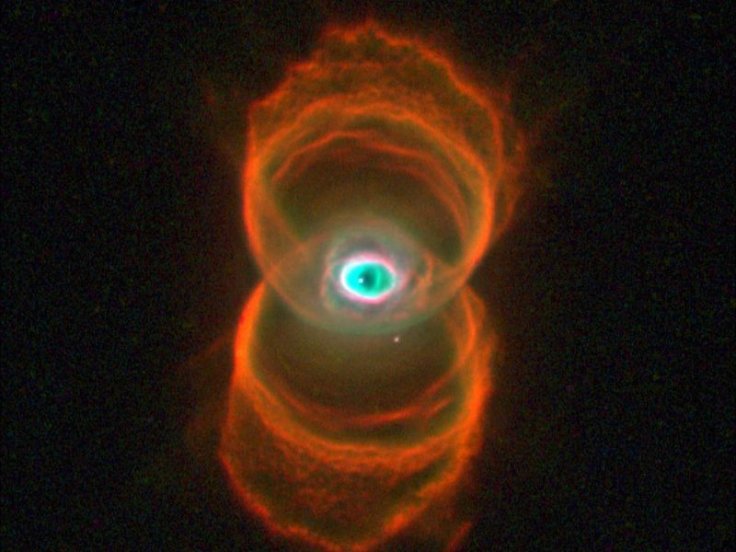NASA and the European Space Agency's (ESA) Hubble Space Telescope recently shared an eerie image of a strange-looking nebula. Based on the photo taken by the space telescope, the cosmic object looks like an hourglass with a green glowing eye at the center.
The main subject of Hubble's photo is known as MyCn 18, which is commonly referred to as the Hourglass Nebula primarily due to its appearance. It lies within the constellation known as Musca and is about 8,000 light-years from Earth's neighborhood.

A Dying Red Giant Star
As explained by the ESA, the nebula was formed by a massive star that's as big as the Sun shortly after it ran out of energy. After its energy source got depleted, the star grew larger and became cooler, eventually transforming into a red giant. During this process, the red giant begins to shed off its outer layer and creates a bright ring around it.
In MyCn 18, the star, which appears like a green glowing eye, expels its outer layer and emits stellar winds into its surroundings. These create glowing red rings around the dying star. Aside from these, the star also emits other elements such as oxygen, nitrogen and hydrogen.
Shaping The Hourglass Nebula
Usually, a dying star only produces one concentric ring around it. MyCn 18, on the other hand, has formed multiple rings that have created an hourglass-like structure. According to NASA, the nebula's unique structure was formed by the interaction between its stellar winds and the dense clouds surrounding it.
"According to one theory for the formation of planetary nebulae, the hourglass shape is produced by the expansion of a fast stellar wind within a slowly expanding cloud which is denser near its equator than near its poles," NASA explained. "What appears as a bright elliptical ring in the center, and at first sight might be mistaken for an equatorially dense region, is seen on closer inspection to be a potato-shaped structure with a symmetry axis dramatically different from that of the larger hourglass."









